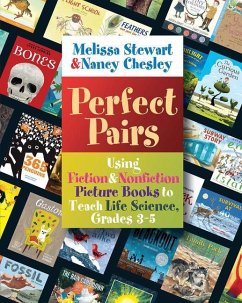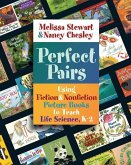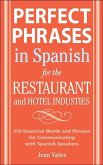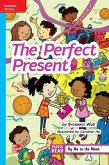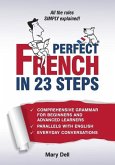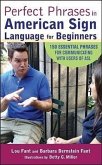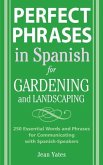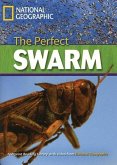Melissa Stewart, Nancy Chesley
Perfect Pairs, 3-5
Using Fiction & Nonfiction Picture Books to Teach Life Science, Grades 3-5
Melissa Stewart, Nancy Chesley
Perfect Pairs, 3-5
Using Fiction & Nonfiction Picture Books to Teach Life Science, Grades 3-5
- Broschiertes Buch
- Merkliste
- Auf die Merkliste
- Bewerten Bewerten
- Teilen
- Produkt teilen
- Produkterinnerung
- Produkterinnerung
Hands-on lessons can be fun and compelling, but when it comes to life science, they aren't always possible, practical, effective, or safe. Children can't follow wolves as they hunt elk, visit a prehistoric swamp, or shrink down to the size of a molecule and observe photosynthesis firsthand.
Andere Kunden interessierten sich auch für
![Perfect Pairs, K-2 Perfect Pairs, K-2]() Melissa StewartPerfect Pairs, K-251,99 €
Melissa StewartPerfect Pairs, K-251,99 €![Perfect Phrases in Spanish for the Hotel and Restaurant Industries Perfect Phrases in Spanish for the Hotel and Restaurant Industries]() Jean YatesPerfect Phrases in Spanish for the Hotel and Restaurant Industries19,99 €
Jean YatesPerfect Phrases in Spanish for the Hotel and Restaurant Industries19,99 €![Reading Wonders Leveled Readerthe Perfect Present: On-Level Unit 5 Week 1 Grade 4 Reading Wonders Leveled Readerthe Perfect Present: On-Level Unit 5 Week 1 Grade 4]() Reading Wonders Leveled Readerthe Perfect Present: On-Level Unit 5 Week 1 Grade 419,99 €
Reading Wonders Leveled Readerthe Perfect Present: On-Level Unit 5 Week 1 Grade 419,99 €![Perfect French in 23 Steps Perfect French in 23 Steps]() Mary DellPerfect French in 23 Steps15,99 €
Mary DellPerfect French in 23 Steps15,99 €![Perfect Phrases in American Sign Language for Beginners Perfect Phrases in American Sign Language for Beginners]() Lou FantPerfect Phrases in American Sign Language for Beginners17,99 €
Lou FantPerfect Phrases in American Sign Language for Beginners17,99 €![Perfect Phrases in Spanish for Gardening and Landscaping Perfect Phrases in Spanish for Gardening and Landscaping]() Jean YatesPerfect Phrases in Spanish for Gardening and Landscaping19,99 €
Jean YatesPerfect Phrases in Spanish for Gardening and Landscaping19,99 €![The Perfect Swarm: Footprint Reading Library 8 The Perfect Swarm: Footprint Reading Library 8]() Rob WaringThe Perfect Swarm: Footprint Reading Library 820,99 €
Rob WaringThe Perfect Swarm: Footprint Reading Library 820,99 €-
-
-
Hands-on lessons can be fun and compelling, but when it comes to life science, they aren't always possible, practical, effective, or safe. Children can't follow wolves as they hunt elk, visit a prehistoric swamp, or shrink down to the size of a molecule and observe photosynthesis firsthand.
Hinweis: Dieser Artikel kann nur an eine deutsche Lieferadresse ausgeliefert werden.
Hinweis: Dieser Artikel kann nur an eine deutsche Lieferadresse ausgeliefert werden.
Produktdetails
- Produktdetails
- Verlag: Routledge
- Seitenzahl: 362
- Erscheinungstermin: 16. November 2016
- Englisch
- Abmessung: 254mm x 203mm x 20mm
- Gewicht: 776g
- ISBN-13: 9781571109590
- ISBN-10: 1571109595
- Artikelnr.: 47364525
- Herstellerkennzeichnung
- Libri GmbH
- Europaallee 1
- 36244 Bad Hersfeld
- gpsr@libri.de
- Verlag: Routledge
- Seitenzahl: 362
- Erscheinungstermin: 16. November 2016
- Englisch
- Abmessung: 254mm x 203mm x 20mm
- Gewicht: 776g
- ISBN-13: 9781571109590
- ISBN-10: 1571109595
- Artikelnr.: 47364525
- Herstellerkennzeichnung
- Libri GmbH
- Europaallee 1
- 36244 Bad Hersfeld
- gpsr@libri.de
Melissa Stewart is an award-winning author of more than 150 science-themed nonfiction books for children and the coauthor of Perfect Pairs: Using Fiction & Nonfiction Picture Books to Teach Life Science, K-2. She also maintains the blog Celebrate Science (http://celebratescience.blogspot.com) and offers school visits and teacher inservice programs that focus on nonfiction writing, using children¿s books to address curriculum standards, and creative ways to integrate science and language arts instruction. Her website is www.melissa-stewart.com. Nancy Chesley was an elementary teacher for twenty-six years and a K¿5 science and literacy specialist for six years. She won the Presidential Award for Excellence in Elementary Science Teaching in 2001 and the Milken Foundation National Distinguished Educator Award in 2002. She received a BA in elementary education and an MSEd in literacy education from the University of Southern Maine. Nancy is the coauthor of Perfect Pairs: Using Fiction & Nonfiction Picture Books to Teach Life Science, K¿2.
Introduction
Getting Started
Meeting the Standards
Lessons for Grade 3
Lesson 3.1: What the Lives of All Creatures Have in Common, Even When Their Life Cycles Are Different
Lesson 3.2: How Being Part of a Group Helps Animals Survive
Lesson 3.3: Why Some Animals Look Different from Their Family Members
Lesson 3.4: What Fossils Can Tell Us About Life and Environments Long Ago
Lesson 3.5: How Variations in Characteristics Can Help Some Animals Survive
Lesson 3.6: How Animals Survive in a Cold Environment
Lesson 3.7: How People Try to Solve Problems That Occur When an Environment Changes
Lessons for Grade 4
Lesson 4.1: How Our Body Structures Help Us Survive
Lesson 4.2: How Feathers Help Birds Survive
Lesson 4.3: How a Tree's Structures Help It Survive
Lesson 4.4: How Animals Depend on Their Senses
Lesson 4.5: How Natural Resources Provide Electrical Energy
Lesson 4.6: How Energy Use Affects Environments and the Animals Living There
Lessons for Grade 5
Lesson 5.1A: Where Plants Get Most of the Materials They Use to Grow
Lesson 5.1B: Where Animals Get the Energy They Need to Live and Grow
Lesson 5.2: Why Dead Plants and Animals Don't Pile Up in Natural Places
Lesson 5.3: How Matter Moves Among Living Things and the Environment
Lesson 5.4: How Living Things Depend on Their Environment for Survival
Lesson 5.5: How Introduced Species Can Affect an Ecosystem
Lesson 5.6: How We Can Protect Earth's Resources and Environments
Getting Started
Meeting the Standards
Lessons for Grade 3
Lesson 3.1: What the Lives of All Creatures Have in Common, Even When Their Life Cycles Are Different
Lesson 3.2: How Being Part of a Group Helps Animals Survive
Lesson 3.3: Why Some Animals Look Different from Their Family Members
Lesson 3.4: What Fossils Can Tell Us About Life and Environments Long Ago
Lesson 3.5: How Variations in Characteristics Can Help Some Animals Survive
Lesson 3.6: How Animals Survive in a Cold Environment
Lesson 3.7: How People Try to Solve Problems That Occur When an Environment Changes
Lessons for Grade 4
Lesson 4.1: How Our Body Structures Help Us Survive
Lesson 4.2: How Feathers Help Birds Survive
Lesson 4.3: How a Tree's Structures Help It Survive
Lesson 4.4: How Animals Depend on Their Senses
Lesson 4.5: How Natural Resources Provide Electrical Energy
Lesson 4.6: How Energy Use Affects Environments and the Animals Living There
Lessons for Grade 5
Lesson 5.1A: Where Plants Get Most of the Materials They Use to Grow
Lesson 5.1B: Where Animals Get the Energy They Need to Live and Grow
Lesson 5.2: Why Dead Plants and Animals Don't Pile Up in Natural Places
Lesson 5.3: How Matter Moves Among Living Things and the Environment
Lesson 5.4: How Living Things Depend on Their Environment for Survival
Lesson 5.5: How Introduced Species Can Affect an Ecosystem
Lesson 5.6: How We Can Protect Earth's Resources and Environments
Introduction
Getting Started
Meeting the Standards
Lessons for Grade 3
Lesson 3.1: What the Lives of All Creatures Have in Common, Even When Their Life Cycles Are Different
Lesson 3.2: How Being Part of a Group Helps Animals Survive
Lesson 3.3: Why Some Animals Look Different from Their Family Members
Lesson 3.4: What Fossils Can Tell Us About Life and Environments Long Ago
Lesson 3.5: How Variations in Characteristics Can Help Some Animals Survive
Lesson 3.6: How Animals Survive in a Cold Environment
Lesson 3.7: How People Try to Solve Problems That Occur When an Environment Changes
Lessons for Grade 4
Lesson 4.1: How Our Body Structures Help Us Survive
Lesson 4.2: How Feathers Help Birds Survive
Lesson 4.3: How a Tree's Structures Help It Survive
Lesson 4.4: How Animals Depend on Their Senses
Lesson 4.5: How Natural Resources Provide Electrical Energy
Lesson 4.6: How Energy Use Affects Environments and the Animals Living There
Lessons for Grade 5
Lesson 5.1A: Where Plants Get Most of the Materials They Use to Grow
Lesson 5.1B: Where Animals Get the Energy They Need to Live and Grow
Lesson 5.2: Why Dead Plants and Animals Don't Pile Up in Natural Places
Lesson 5.3: How Matter Moves Among Living Things and the Environment
Lesson 5.4: How Living Things Depend on Their Environment for Survival
Lesson 5.5: How Introduced Species Can Affect an Ecosystem
Lesson 5.6: How We Can Protect Earth's Resources and Environments
Getting Started
Meeting the Standards
Lessons for Grade 3
Lesson 3.1: What the Lives of All Creatures Have in Common, Even When Their Life Cycles Are Different
Lesson 3.2: How Being Part of a Group Helps Animals Survive
Lesson 3.3: Why Some Animals Look Different from Their Family Members
Lesson 3.4: What Fossils Can Tell Us About Life and Environments Long Ago
Lesson 3.5: How Variations in Characteristics Can Help Some Animals Survive
Lesson 3.6: How Animals Survive in a Cold Environment
Lesson 3.7: How People Try to Solve Problems That Occur When an Environment Changes
Lessons for Grade 4
Lesson 4.1: How Our Body Structures Help Us Survive
Lesson 4.2: How Feathers Help Birds Survive
Lesson 4.3: How a Tree's Structures Help It Survive
Lesson 4.4: How Animals Depend on Their Senses
Lesson 4.5: How Natural Resources Provide Electrical Energy
Lesson 4.6: How Energy Use Affects Environments and the Animals Living There
Lessons for Grade 5
Lesson 5.1A: Where Plants Get Most of the Materials They Use to Grow
Lesson 5.1B: Where Animals Get the Energy They Need to Live and Grow
Lesson 5.2: Why Dead Plants and Animals Don't Pile Up in Natural Places
Lesson 5.3: How Matter Moves Among Living Things and the Environment
Lesson 5.4: How Living Things Depend on Their Environment for Survival
Lesson 5.5: How Introduced Species Can Affect an Ecosystem
Lesson 5.6: How We Can Protect Earth's Resources and Environments

